You may have noticed that I’ve sewn quite a few knit garments this past spring and summer. Such as:
Here are a few reasons why I chose knits (besides that fact that my local fabric store was going out of business and had them for one dollar a yard):
- When you sew with knits you can make a lot of clothing fairly quickly.
- Knits don’t ravel and generally don’t require much special treatment.
- Because of their stretch knits are comfortable to wear and easier to fit than garments out of woven fabrics.
- Most patterns for knits have less complicated design lines and construction is simple.
Some have expressed concern, however, about sewing fabric that stretches. So here are a few things to keep in mind when sewing with knits.
Choosing the right knit fabric for your pattern, (or the right pattern for your knit):
Knits have a wide range of stretchiness; you need to choose the fabric that best suits your pattern.
- Single knits, also called jersey, are what come to mind when you think of a knit garment such as a t-shirt. A single knit is simply a fabric knitted on a single pair of needles, just like you’d knit a sweater or scarf. They have stretch across the width of the fabric, but not much along the length. Jersey is great for tops, dresses and skirts. If you’ve never sewn with knits before, I’d suggest you start with a jersey in a solid color you love.
- Double knits are heavier in weight than single knits because they are made using two sets of needles, so the fabric is double in thickness. It tends to have just a little crosswise stretch and so is good for jackets and pants. A firm double knit can certainly be used in a pattern designed for woven fabrics.
- Sweatshirt fleece is a thicker knit with a cozy brushed surface on the wrong side. It tends to have only moderate crosswise stretch and is great for sweatshirts and sweatpants.
- Ribbing has prominent vertical ribs on both sides and a great deal of crosswise stretch. Ribbing is traditionally used for sweater and sweatshirt cuffs, necklines and lower bands, but can also be used for close-fitting garments, such as tank tops. (The blue top above was made out of ribbing. Click on the photo to read the full article.)
- Four-way stretch knits are usually used for active garments such as swimsuits, leotards and dance costumes. They have crosswise and lengthwise stretch due to Spandex or Lycra being blended in with the primary fiber. (The black top above required a four-way stretch knit.)
- Slinky knits drape extremely well and rarely wrinkle. You’ll know you have a slinky knit if you pick up a length and it flows through your hands like water. 🙂 Despite its lovely feel, and your strong desire to make a beautifully flowing top or dress out of it, I don’t recommend slinky knits for beginning knit sewers. (If you must have it, I’ll tell you later how to best work with it.)
There is a LOT of helpful information on the back of a pattern envelope. First you need to look at the recommended fabrics. In the pattern below you’ll see that this top is sized for stretch knits only. If I were to make it out of a woven, I wouldn’t be able to get into it. (Well, maybe just my arm, lol.) 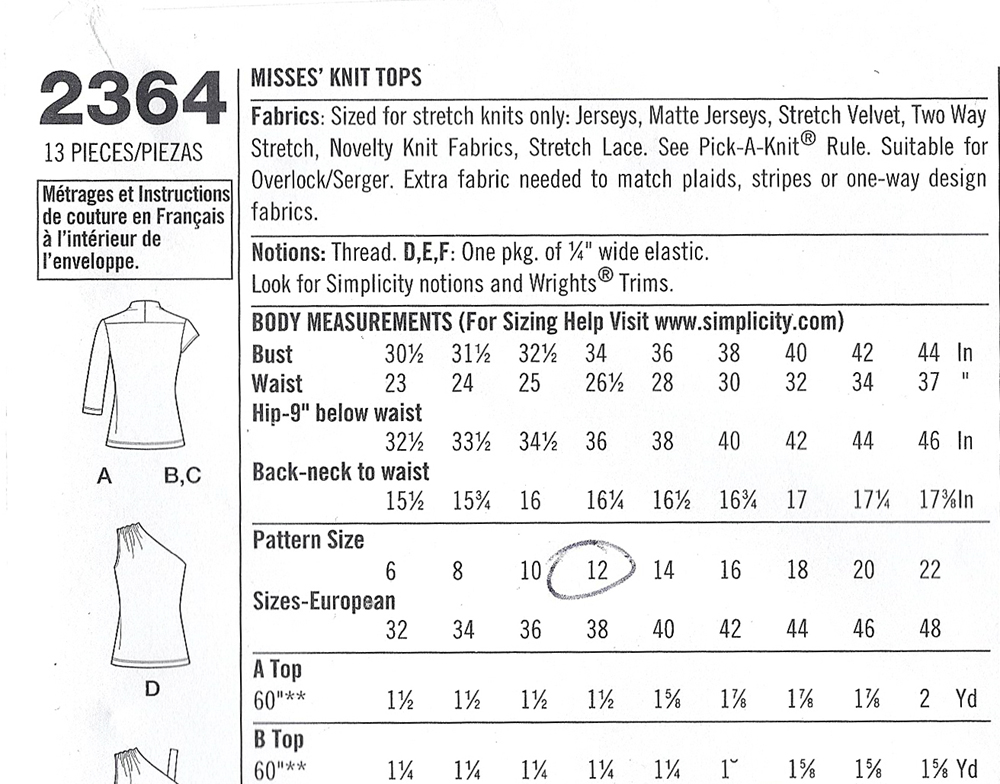
Next you’ll need to check the amount of stretch your fabric must have in order to work with that pattern. If you look at the back of any pattern sized for stretch knits you’ll find a rule similar to the one below.
Simply hold a folded crosswise section of fabric against the gauge and see if it will stretch (reasonably easily) to the point indicated. (If you have to really yank on the fabric to make it stretch that far, it does not have enough stretch for this pattern. Don’t be tempted, you’ll be sooooorrrry.)
Knits come in many different fibers including wool, cotton, rayon, silk and even bamboo. One thing they all seem to have in common is that they tend to shrink in the length over time. (How many too-short t-shirts do you have?) I always pre-wash fabric for any sewing project, but it’s a good idea to pre-wash and dry knits two or three times before cutting out.
So to sum up, when it says “stretch knits” on the pattern, you only need to keep in mind two things:
- Is the fabric appropriate for the pattern style? For example, you wouldn’t use a lingerie weight tricot knit to make a sweatshirt, neither would you use a sweatshirt knit for a drapey top. (Also note that the fabric suggestions usually give you an idea of what to use, such as in the pattern above where it says “Jerseys, Matte Jerseys, Stretch Velvet,” etc.)
- Does the fabric have at least the amount of stretch indicated on the gauge?
That really is all there is to it.
Part Two, Cutting Out Knit Fabrics (including how to cut out those ever-slippery slinky knits.)
Part Three, Needles & Stitches (choosing the right ones can make all the difference.)
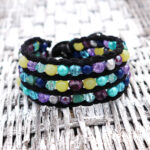
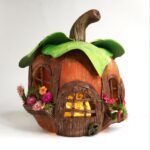
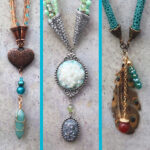

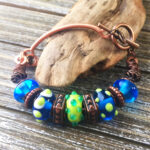
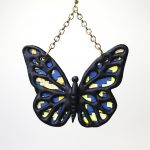


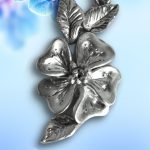
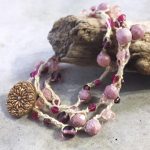
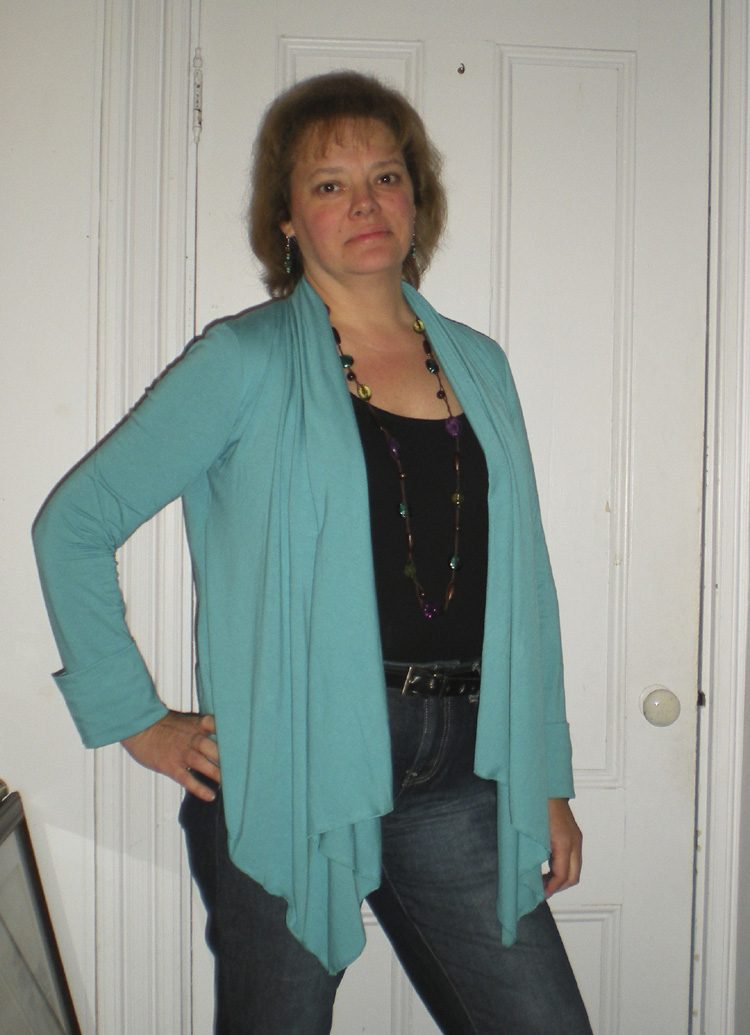

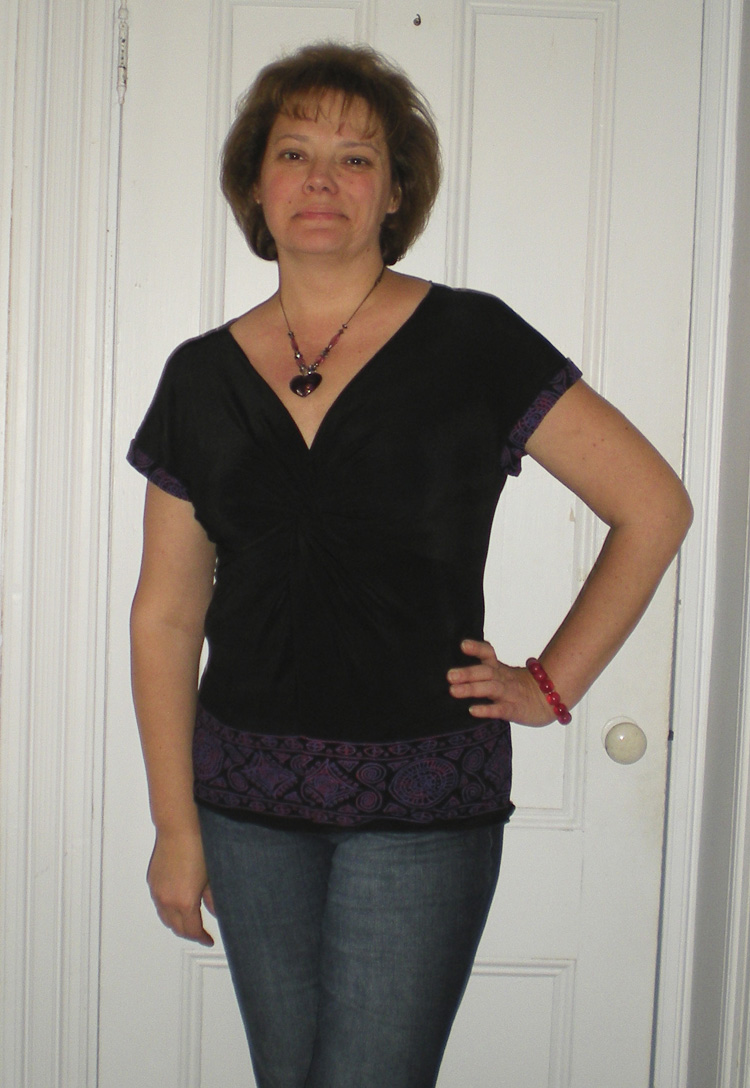
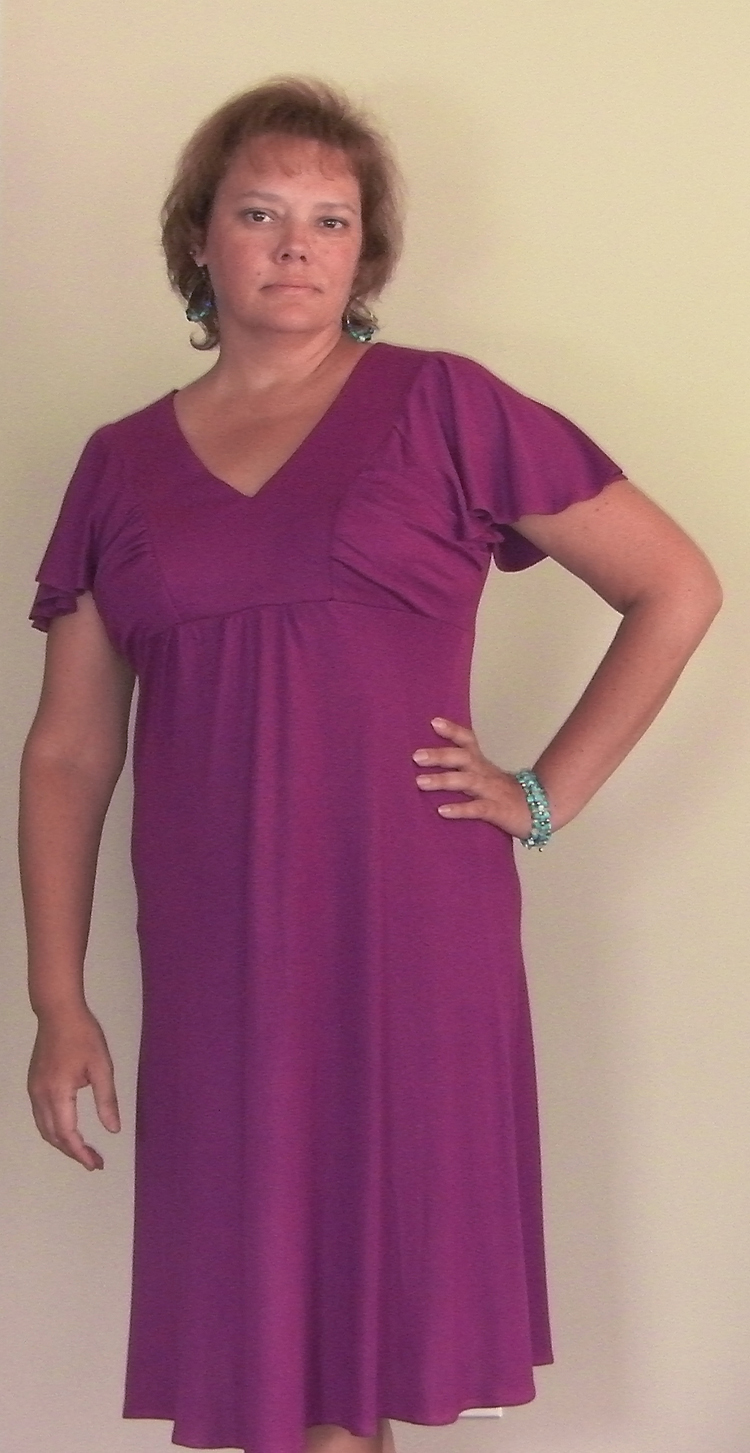

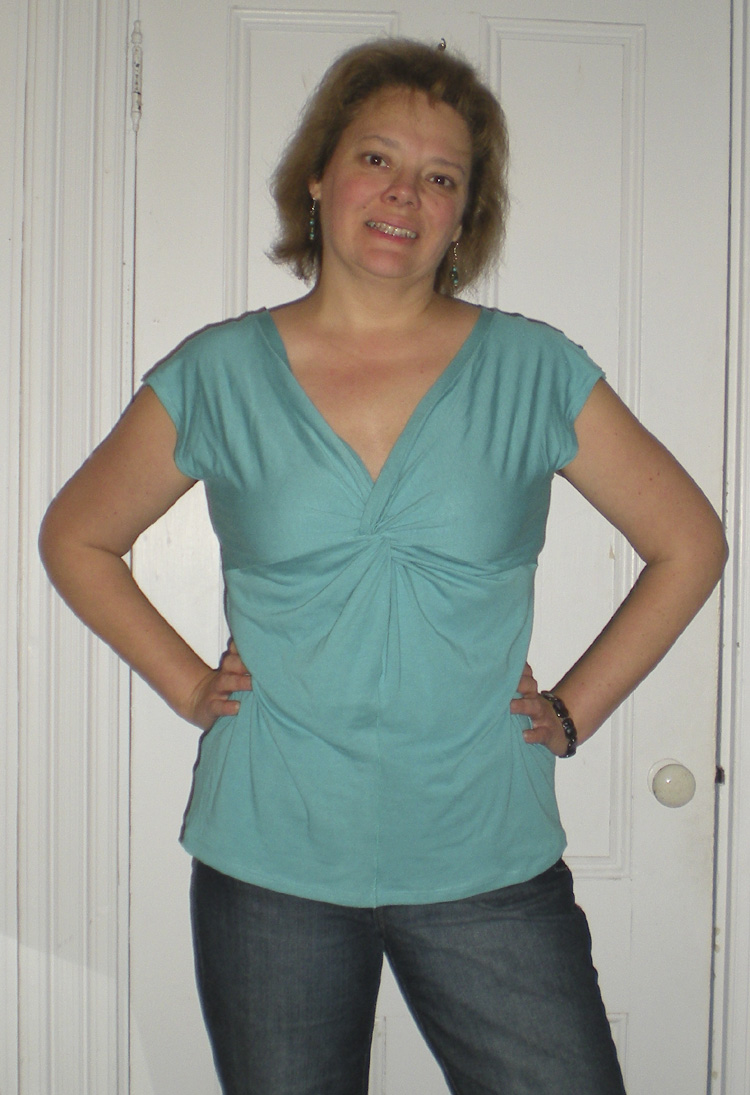


That’s a good intro, Sandy. Thanks! Although my head is spinning already. When they say “stretch knits” on the pattern, which category of your knits does that correspond to? Single knits? Double?
I’m still not buying any knits–even at $1 a yard–until I get through the rest of your tutorial. Will there be a test at the end? :}
Excellent question, Robin. So excellent, in fact, that I’ve updated the blog with this info:
Okay, if you say so. Still not buying any knits till I pass the whole tutorial.